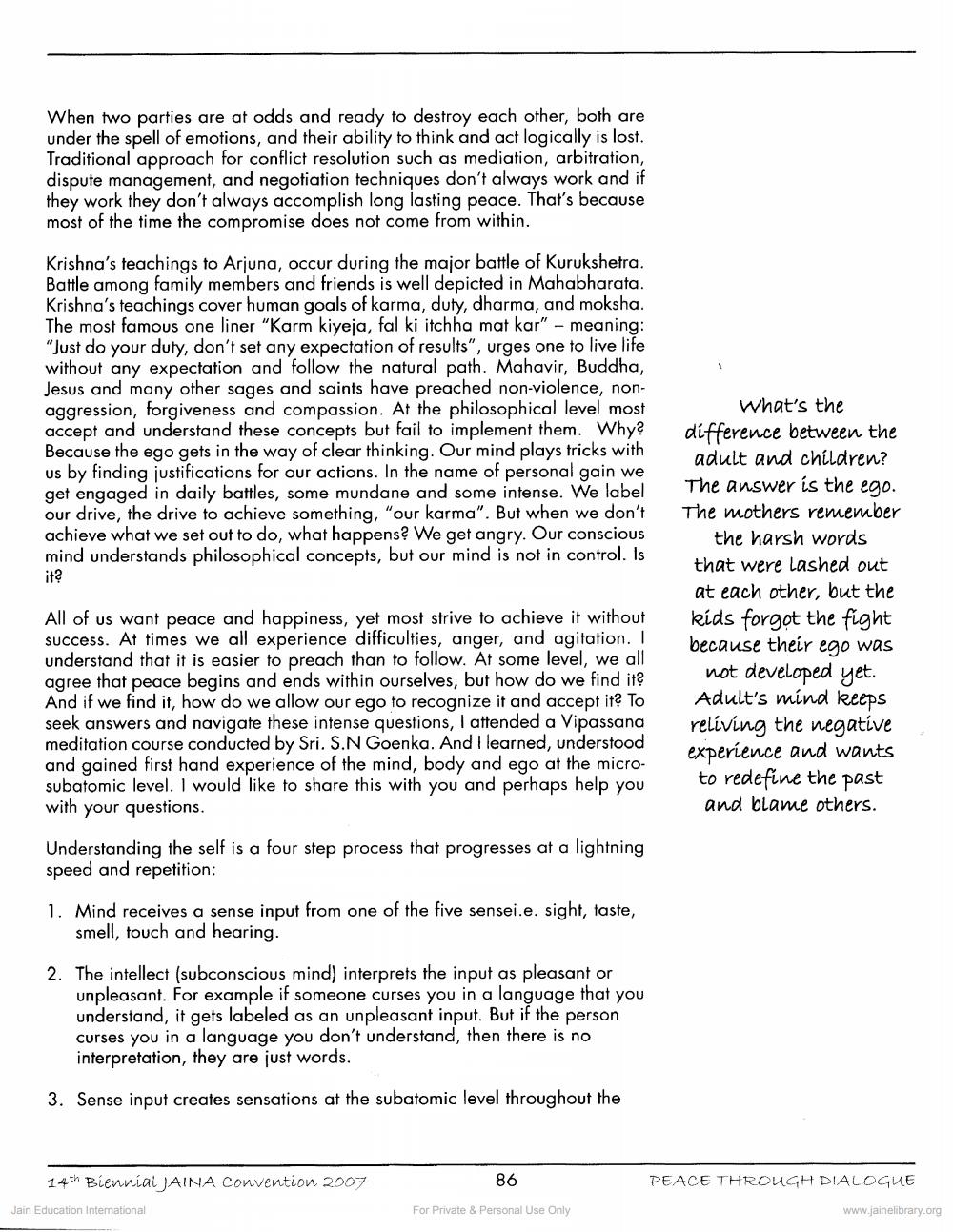________________
When two parties are at odds and ready to destroy each other, both are under the spell of emotions, and their ability to think and act logically is lost. Traditional approach for conflict resolution such as mediation, arbitration, dispute management, and negotiation techniques don't always work and if they work they don't always accomplish long lasting peace. That's because most of the time the compromise does not come from within.
Krishna's teachings to Arjuna, occur during the major battle of Kurukshetra. Battle among family members and friends is well depicted in Mahabharata. Krishna's teachings cover human goals of karma, duty, dharma, and moksha. The most famous one liner "Karm kiyeja, fal ki itchha mat kar" - meaning: "Just do your duty, don't set any expectation of results", urges one to live life without any expectation and follow the natural path. Mahavir, Buddha, Jesus and many other sages and saints have preached non-violence, nonaggression, forgiveness and compassion. At the philosophical level most accept and understand these concepts but fail to implement them. Why? Because the ego gets in the way of clear thinking. Our mind plays tricks with us by finding justifications for our actions. In the name of personal gain we get engaged in daily battles, some mundane and some intense. We label our drive, the drive to achieve something, "our karma". But when we don't achieve what we set out to do, what happens? We get angry. Our conscious mind understands philosophical concepts, but our mind is not in control. Is it?
All of us want peace and happiness, yet most strive to achieve it without success. At times we all experience difficulties, anger, and agitation. ! understand that it is easier to preach than to follow. At some level, we all agree that peace begins and ends within ourselves, but how do we find it? And if we find it, how do we allow our ego to recognize it and accept it? To seek answers and navigate these intense questions, I attended a Vipassana meditation course conducted by Sri. S.N Goenka. And I learned, understood and gained first hand experience of the mind, body and ego at the microsubatomic level. I would like to share this with you and perhaps help you with your questions.
Understanding the self is a four step process that progresses at a lightning speed and repetition:
1. Mind receives a sense input from one of the five sensei.e. sight, taste, smell, touch and hearing.
2. The intellect (subconscious mind) interprets the input as pleasant or unpleasant. For example if someone curses you in a language that you understand, it gets labeled as an unpleasant input. But if the person curses you in a language you don't understand, then there is not interpretation, they are just words.
3. Sense input creates sensations at the subatomic level throughout the
14th Biennial JAINA Convention 2007
Jain Education International
86
For Private & Personal Use Only
What's the
difference between the adult and children? The answer is the ego. The mothers remember the harsh words that were lashed out at each other, but the kids forgot the fight because their ego was not developed yet. Adult's mind keeps reliving the negative experience and wants to redefine the past and blame others.
PEACE THROUGH DIALOGUE
www.jainelibrary.org




